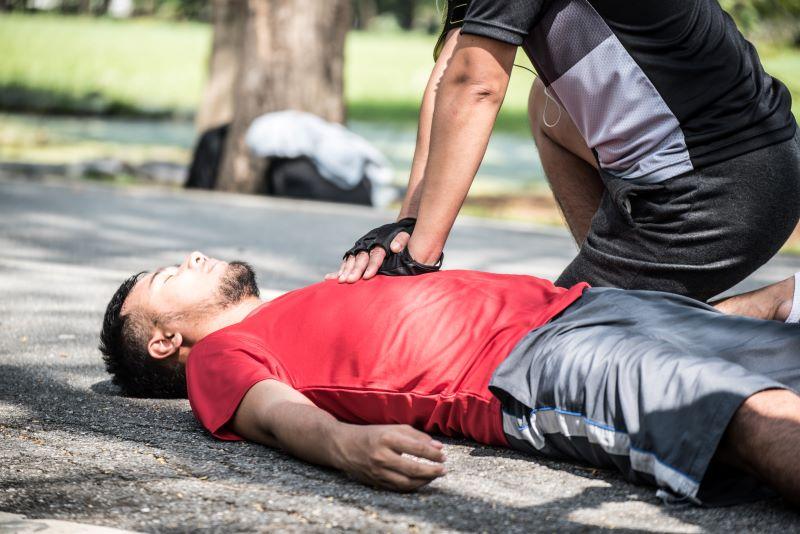Get Healthy!

- Cara Murez
- Posted August 24, 2023
Bystander CPR, Defib Use Saves Lives Even If Ambulance Arrives Quickly
Bystander aid using CPR and a defibrillator can be critically important for saving lives when someone has a cardiac arrest -- even when an ambulance arrives quickly, say researchers.
A new study finds that when a bystander uses a defibrillator, on top of CPR, on someone who has had a cardiac arrest, that patient's 30-day survival improves, even when an ambulance takes just two minutes to arrive to the scene.
Study findings were presented Thursday at the European Society of Cardiology Congress 2023, in Amsterdam.
"When a person collapses from sudden cardiac arrest, the most effective way a bystander can help is to perform CPR and use an automated external defibrillator [AED],"said study author Dr. Mathias Hindborg of Nordsjaellands Hospital in Hillerod, Denmark.
"Previous studies have investigated the best location for AEDs but there is little information on how ambulance response times might impact placement," he said in a meeting news release. "Therefore, we examined the effect of AED use on survival according to ambulance response times."
Most cardiac arrests happen when someone is in the community. Cardiac arrhythmia, the kind that makes the lower chambers of the heart beat in an irregular rhythm, causes the heart to stop pumping and blood flow stops.
If blood flow is not restored quickly, the individual passes out and dies within 10 to 20 minutes, according to the European Society of Cardiology.
People who witness what's happening can help save someone's life by calling an ambulance and starting chest compressions while asking someone else to find a defibrillator.
That defibrillator can then deliver a high-energy electric shock, which restarts the heart.
Using data from the Danish Cardiac Arrest Registry, researchers looked at cases of adults who had a cardiac arrest in the community from 2016 through 2020 and received at least CPR from a bystander, where an ambulance arrived in 25 minutes or less.
They compared the probability of survival between patients that had been defibrillated by a bystander before the ambulance arrived and those who weren't defibrillated.
They also measured eight different intervals of ambulance response time, adjusting for other factors that can have an impact on survival, including age, sex, whether the cardiac arrest was at a public or private place and other medical conditions such as prior heart attack or stroke.
Among the more than 7,400 adults in the study who received CPR before an ambulance arrived, 14.7% also received bystander defibrillation and 85.3% did not.
About 44.5% of patients survived to 30 days when a bystander defibrillated them compared with 18.8% when there was no bystander defibrillation.
Those who received bystander defibrillation were more likely to survive to 30 days for all time intervals of ambulance arrival up to 25 minutes, except for the quickest time when the ambulance and emergency staff was on the scene in less than two minutes.
The likelihood of survival with bystander defibrillation was 37% higher when the ambulance arrived in two to four minutes, 55% higher for arrival in four to six minutes, and approximately twofold higher for all the remaining intervals studied up to 25 minutes.
"The greatest positive impact of bystander defibrillation on the probability of survival was achieved when the ambulance took six to eight minutes to reach the scene," Hindborg said. "The findings indicate that when resources are limited, defibrillators should be located in areas where ambulance response times are likely to be more than six minutes."
Findings presented at medical meetings are considered preliminary until published in a peer-reviewed journal.
More information
The U.S. National Institutes of Health has more on cardiac arrest.
SOURCE: European Society of Cardiology, news release. Aug. 22, 2023







